When choosing a squat wedge or slant board, you want to use one that allows you to elevate your whole foot between 5-20 degrees because this will improve your squat depth and shift the tension from your lower back to your legs.
A sIant board with a steeper angle of around 20 degrees will help keep your torso upright and put more load on your thighs compared to a 5 degree slope. You can think of it as a spectrum, where a flatter slope will make you lean forward more causing you to load the hips than the quadriceps, while a steeper slope will concentrate more on the thighs due to the upright torso.
For the past decade, I have primarily used a 15-degree slope with my clients because it reduces back tension in the squat without placing excessive strain on the knee joints. Also, I can still use it for calf raises, hip thrusts, and split squats. Furthermore, it is more effective at enhancing your squat pattern than a steeper wedge because you have to bend your hips more.
Who Should Use A Steeper Wedge?
However, if you have limited hip and ankle mobility or prefer to focus solely on your thighs, then the 20-degree slant board is a better option. Remember, as the angle increases, your torso remains more upright, placing greater tension on your thighs and knee joints.
But it is critical to remember that in life, more is not always preferable, and heel elevation is no exception to this rule. Personally, I believe that going beyond 20 degrees is unnecessary because it shifts your center of mass too far forward and makes it difficult to load your hips.
Can't I Just Walk Down The Slant Board?
When the knee travels over the toe, the foot should widen, and the arch should flatten. The only way to mimic this action at the foot is through whole foot heel elevation. This is why elevating your whole foot is superior to only heel elevation because it helps you to shift your center of mass backward and enables your foot and ankle to move normally.
Whereas elevating the heel only at a steep slope will place your toes into extension. This will push your center of mass too far forward and will hinder normal foot and ankle biomechanics. So you should only walk down your slant board to a smaller slope if you can keep your toes in a neutral position. If you feel a ton of pressure on your toes or you are going to fall forward, then the slope is too steep for you.
.




Leave a comment
This site is protected by reCAPTCHA and the Google Privacy Policy and Terms of Service apply.